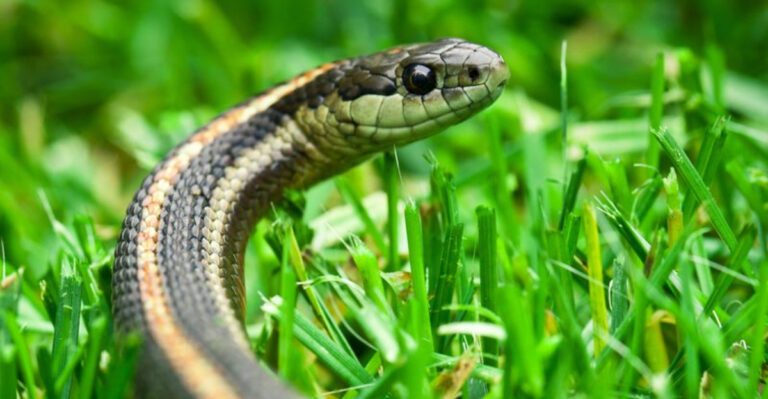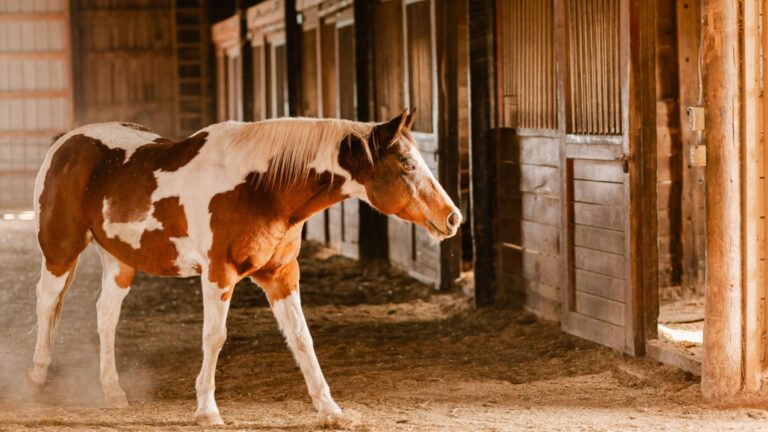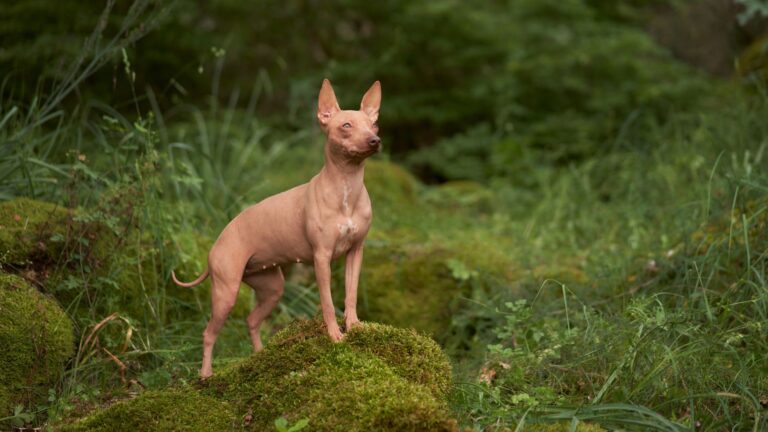15 Dog Breeds That Can Survive In The Wild
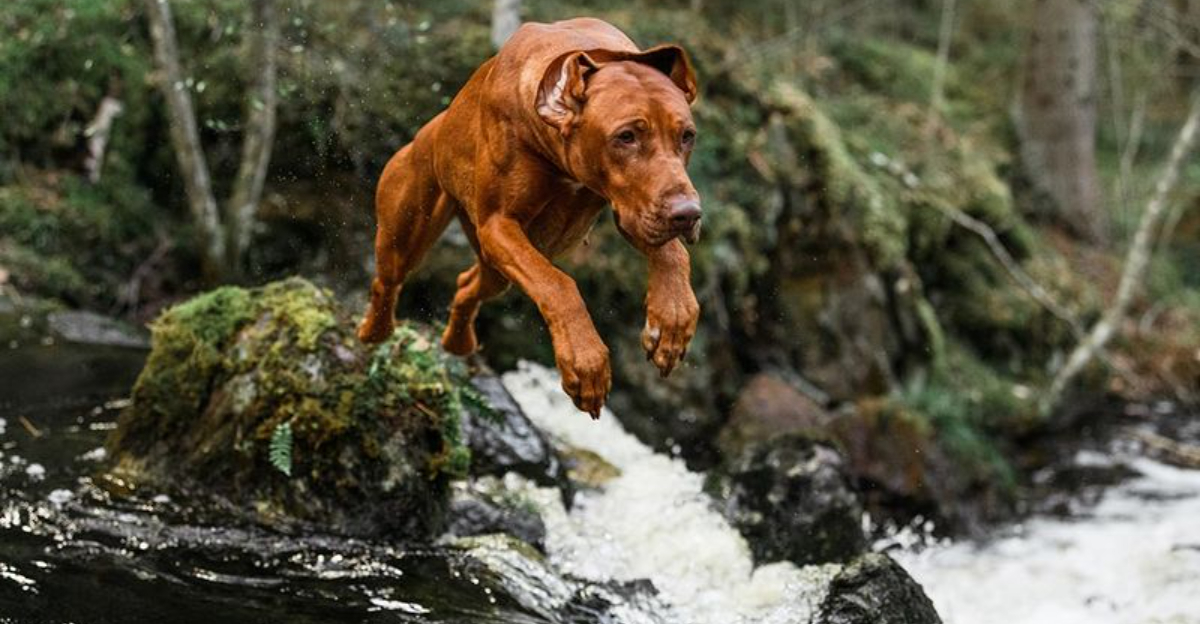
Ever wondered which dog breeds could actually make it if they suddenly found themselves in the wilderness?
While our pampered pooches enjoy comfy beds and regular meals, their ancestors once roamed wild. Some modern breeds still carry those survival instincts in their DNA. From expert hunters to weather-resistant coats, these 15 dogs have what it takes to thrive when the going gets tough.
1. Alaskan Malamute
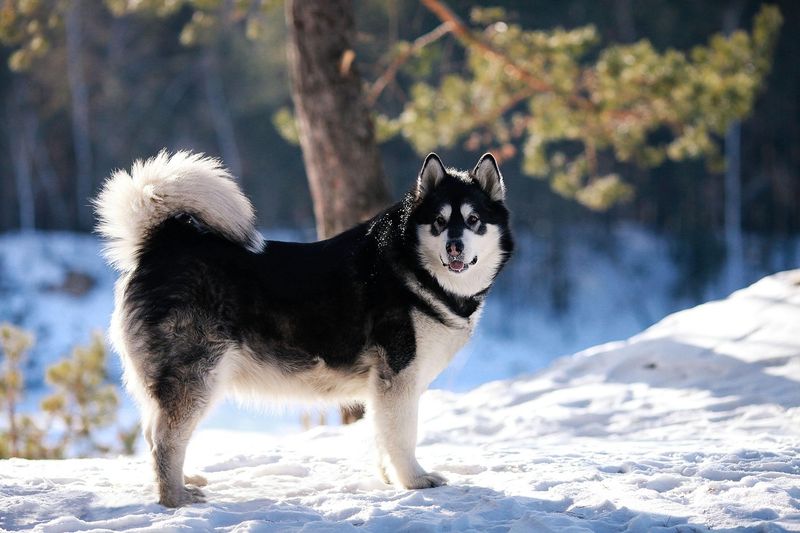
Cold weather? No problem for these Arctic powerhouses. Malamutes boast thick double coats that insulate against freezing temperatures.
Their strong pack mentality makes them excellent hunters, working together to track prey. Originally bred by the Mahlemut Inuit tribe, these dogs can pull heavy loads across snowy terrain while requiring minimal food for their size.
2. Australian Cattle Dog
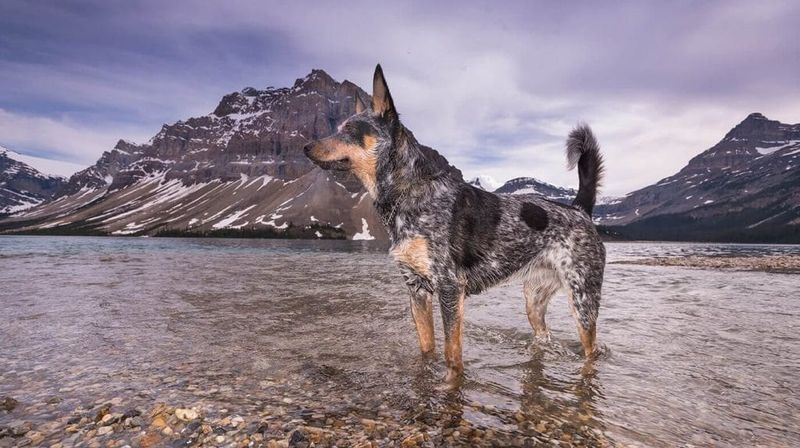
Forget five-star hotels—these rugged workers prefer the outback. Australian Cattle Dogs evolved to handle the harsh conditions of the Australian wilderness with minimal human supervision.
Their natural herding abilities translate to hunting skills when necessary. Extremely intelligent problem-solvers with boundless energy, they can adapt to various environments while maintaining the stamina to cover vast territories.
3. Siberian Husky
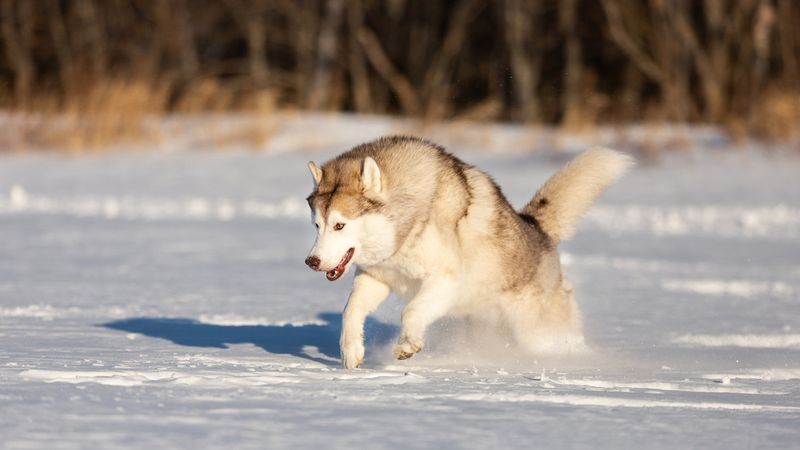
Famous for their unmatched endurance, Huskies were born to survive brutal Siberian winters. Their unique metabolism allows them to run for hours while conserving energy and requiring surprisingly little food.
Sharp hunting instincts remain intact despite generations of domestication. Those striking blue eyes aren’t just for looks—they offer enhanced vision in snowy conditions, helping these natural-born survivors spot prey from impressive distances.
4. German Shepherd
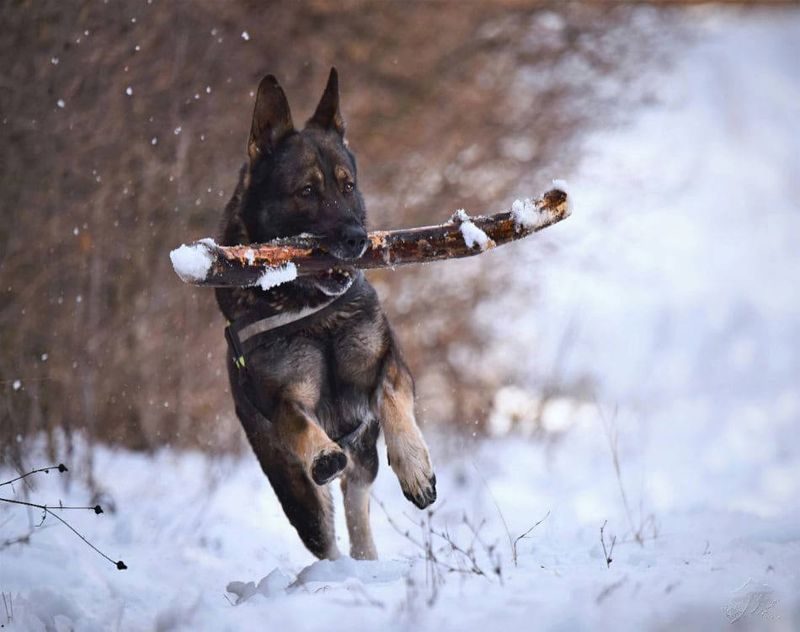
Natural protectors with brains to match their brawn. German Shepherds possess the perfect combination of intelligence, strength, and adaptability needed for wilderness survival.
Their powerful jaws and athletic build make them formidable hunters. Weather-resistant double coats protect against various elements, while their legendary problem-solving abilities help them navigate challenging situations, from finding shelter to securing food sources.
5. Rhodesian Ridgeback
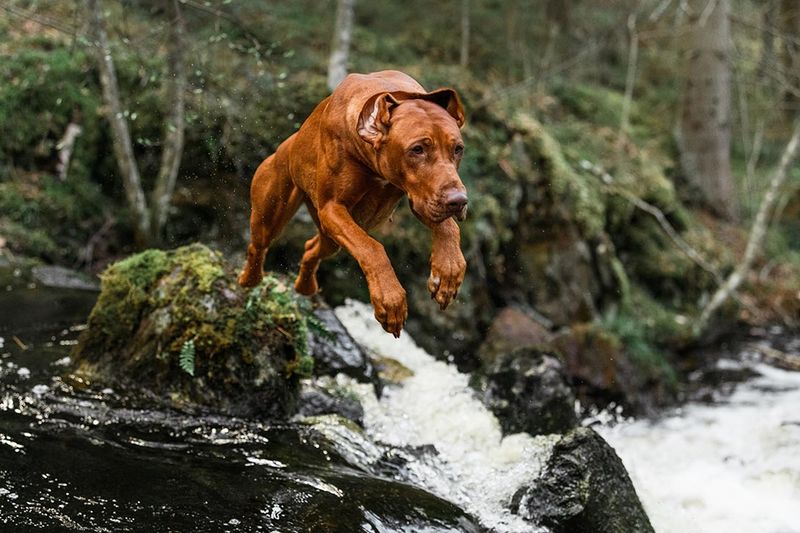
Born lion hunters with survival coded into their DNA. Originally bred in Africa to track and corner lions, Ridgebacks developed incredible stamina and independence.
Their short coats handle heat beautifully while providing some protection from thorny brush. Naturally wary with exceptional protective instincts, these dogs can detect threats long before humans notice anything amiss, making them perfect wilderness companions and survivors.
6. Catahoula Leopard Dog
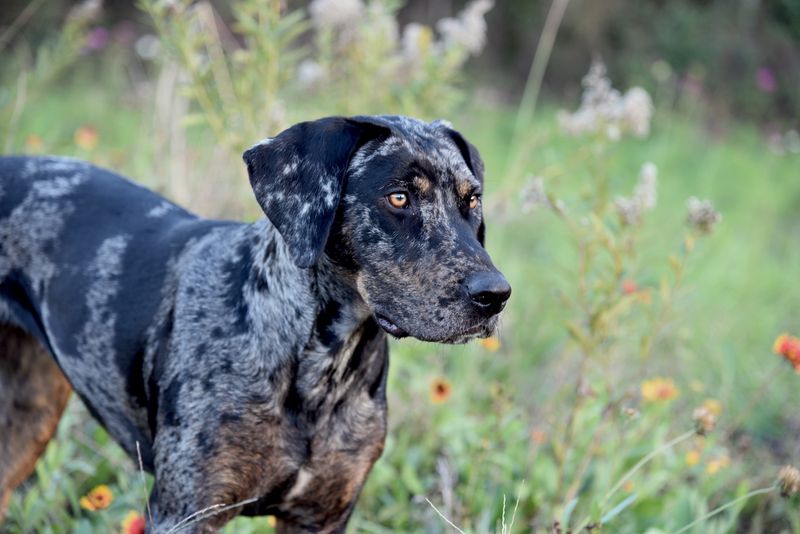
Swamp-savvy hunters with determination in spades. Developed in Louisiana’s challenging bayou country, Catahoulas evolved as versatile working dogs capable of hunting everything from wild boar to raccoons.
Their webbed feet make them excellent swimmers in marshy terrain. Fiercely independent thinkers, they possess natural tracking abilities and can survive on minimal resources while maintaining their legendary stamina for days of hunting.
7. Carolina Dog
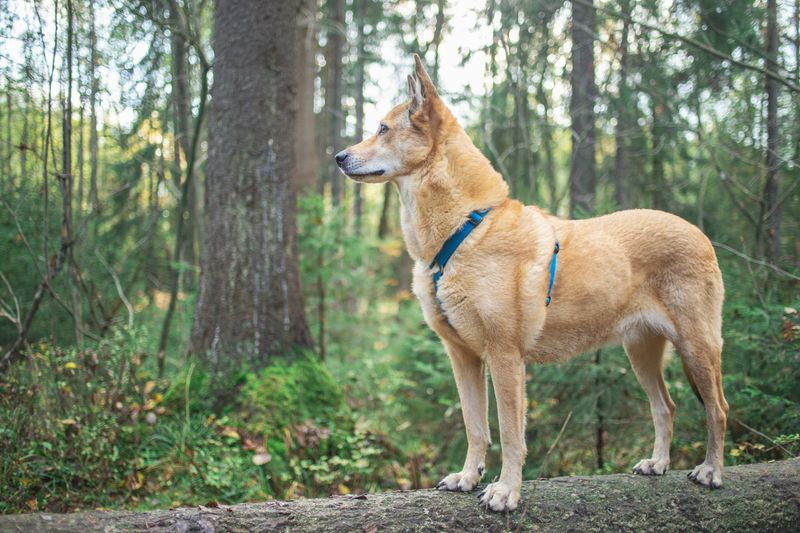
Living proof that wild dogs still exist among us. Often called “American Dingoes,” Carolina Dogs survived for centuries in isolated areas of the southeastern United States with minimal human contact.
Their hunting style mimics that of wolves, using pack tactics to bring down prey. Naturally wary, these primitive dogs maintain strong denning instincts, digging sophisticated shelters and raising pups with minimal resources in true wild-dog fashion.
8. Norwegian Elkhound
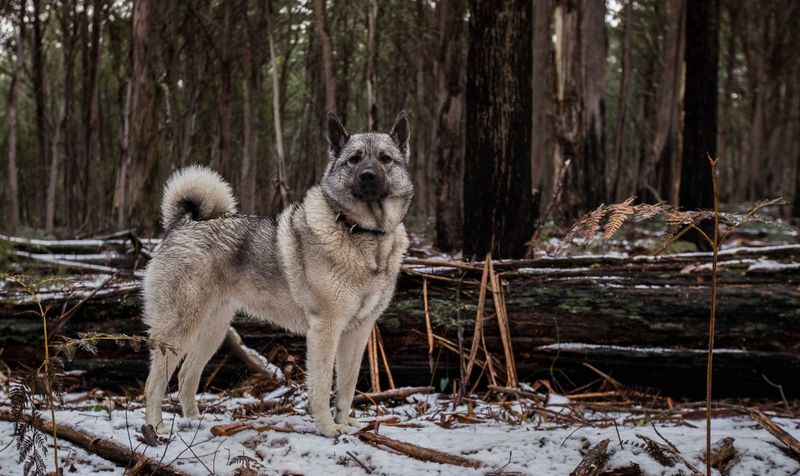
Arctic hunters that laugh at blizzards. Dating back to Viking times, these sturdy companions hunted moose and bear alongside Norse warriors in brutal Scandinavian winters.
Their weather-resistant silver-gray coats provide insulation against extreme cold. Compact yet powerful bodies generate remarkable heat, allowing them to sleep comfortably in snow. Natural tracking abilities combined with incredible endurance make them self-sufficient hunters in the harshest conditions.
9. Dingo
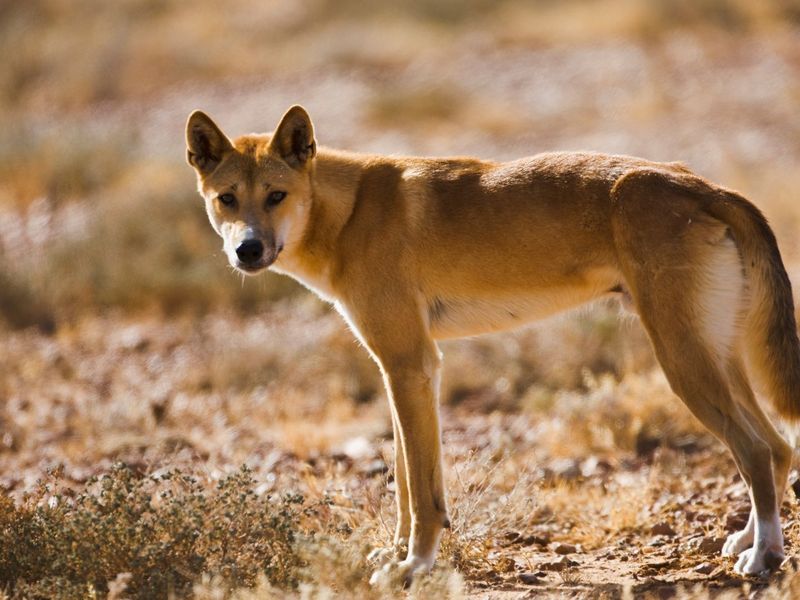
Masters of the Australian outback for thousands of years. Though not technically a breed, these wild dogs represent the ultimate wilderness survivors, having adapted perfectly to one of Earth’s harshest environments.
Extremely resourceful hunters, they can go weeks between meals when necessary. Their unique shoulder joints allow them to rotate their heads almost completely backward. Unlike most dogs, dingoes rarely bark, using howls and growls for communication instead.
10. Caucasian Shepherd
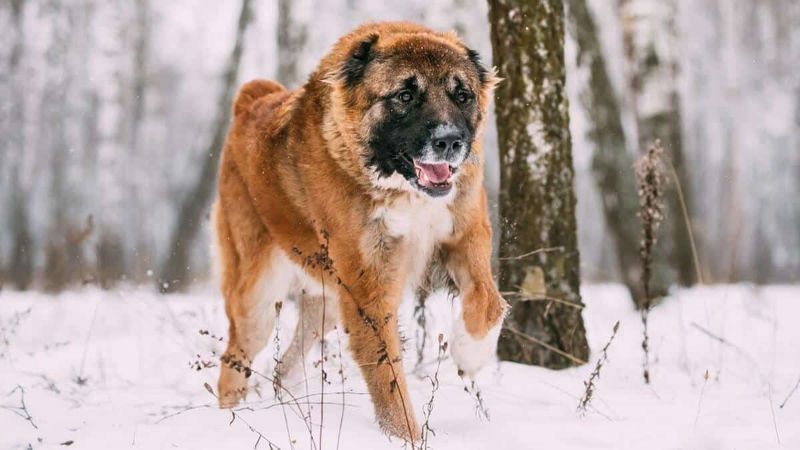
Mountain guardians built like furry tanks. Developed in the rugged Caucasus Mountains, these massive dogs protected livestock from wolves and bears without human assistance for centuries.
Their incredibly thick coats withstand freezing mountain temperatures. Fiercely independent with natural guardian instincts, they can intimidate or fight off large predators when necessary. Despite their size, they’re surprisingly agile across rough terrain and require minimal food relative to their mass.
11. Canaan Dog
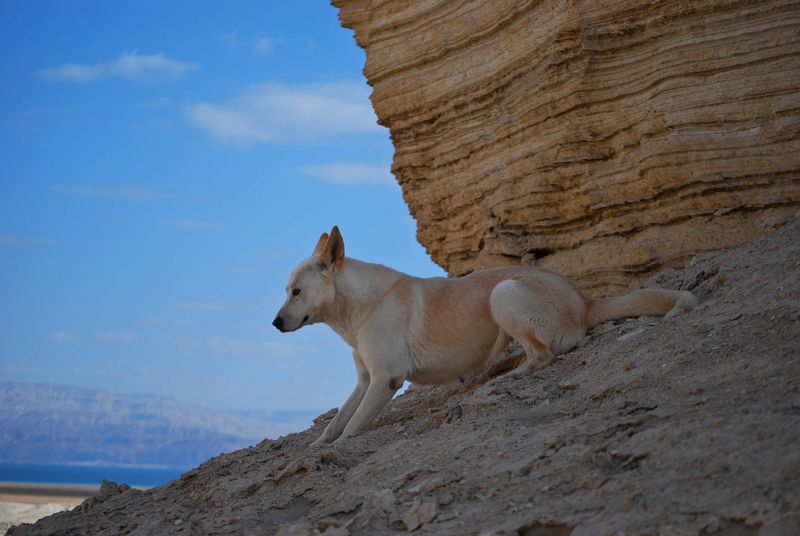
Desert survivors with ancient instincts intact. These medium-sized dogs survived for thousands of years in the harsh deserts of the Middle East, reverting to wild packs when abandoned by humans.
Extremely heat-tolerant with minimal water requirements. Their natural wariness and exceptional hearing help them detect predators from great distances. Opportunistic feeders, they’ve evolved to survive on whatever food sources the desert environment provides.
12. Blue Lacy
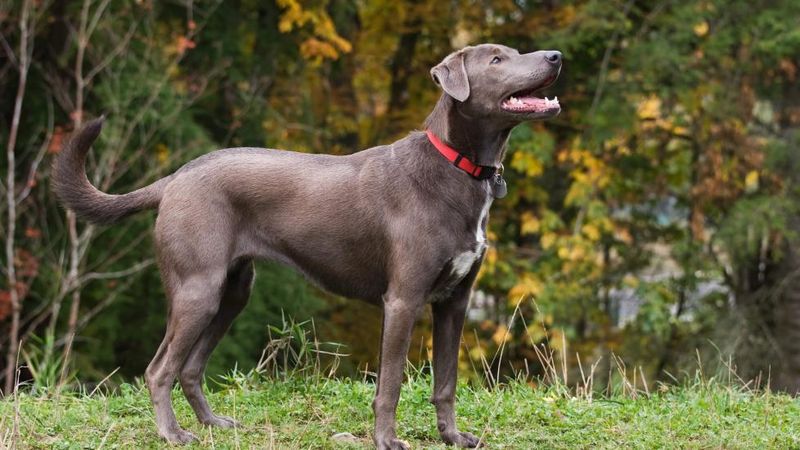
Texan tough with endless drive. Developed by pioneer settlers, these versatile working dogs thrived in the challenging Texas landscape with minimal human support.
Their lean, muscular builds combine speed with endurance. Natural hunters with exceptional tracking abilities, they can pursue prey for miles without tiring. Their short coats handle heat well while providing some protection from brush, making them well-adapted to various terrain types.
13. Basenji
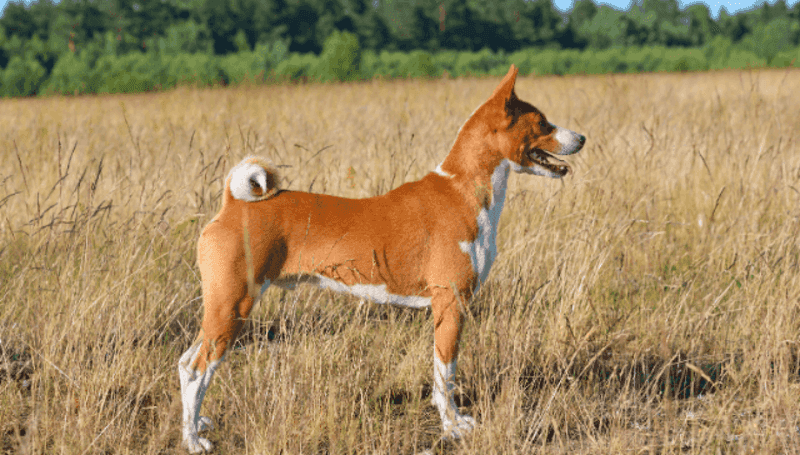
Africa’s bush dogs with survival skills honed over millennia. Originally from central Africa, Basenjis hunted alongside humans while maintaining strong independent survival instincts.
Famous for not barking, they communicate through yodels and howls instead. Their short coats and light builds help them navigate dense jungle efficiently. Exceptional climbers, they can scale trees to escape predators or spot prey, giving them a unique survival advantage.
14. Thai Ridgeback
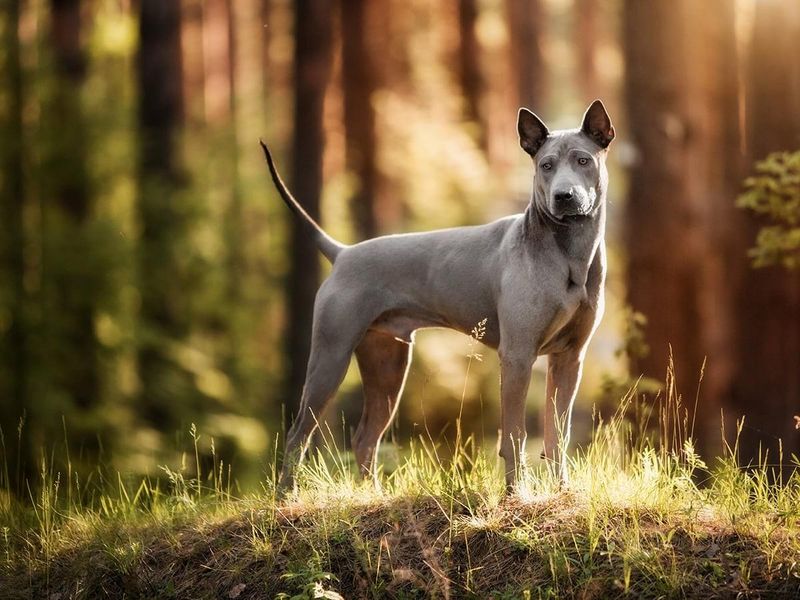
Jungle-savvy guardians with primitive instincts. For centuries, these dogs survived in isolated parts of Thailand with minimal human intervention, developing impressive self-sufficiency.
Their short coats handle tropical heat beautifully. Natural hunters with exceptional agility, they can catch small game and even climb trees when necessary. Their distinctive ridge of backward-growing hair along the spine once helped protect their backs from predator attacks.
15. New Guinea Singing Dog
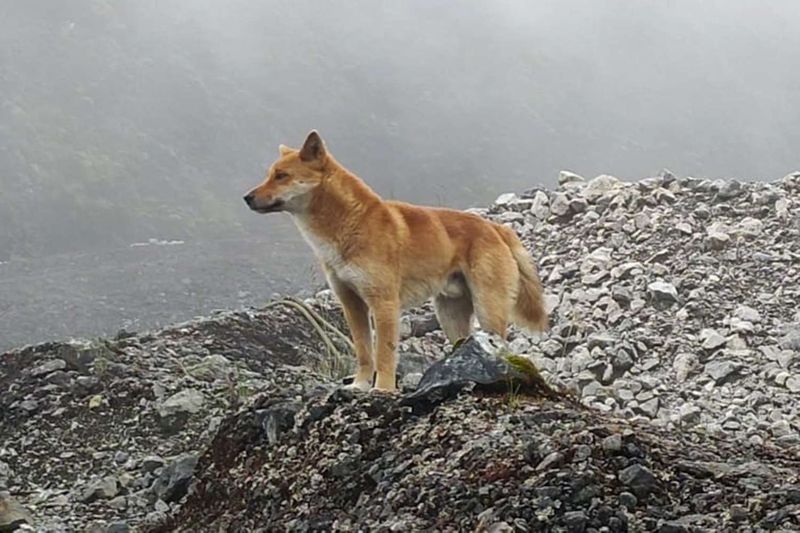
Rare wild canines with extraordinary physical capabilities. These elusive dogs survived for thousands of years in New Guinea’s remote highlands with no human assistance.
Famous for their unique vocalizations that sound like singing. Their bodies possess cat-like agility, allowing them to climb trees and navigate rocky terrain with ease. Exceptional night vision and rotating joints give them hunting advantages few domestic dogs possess.

